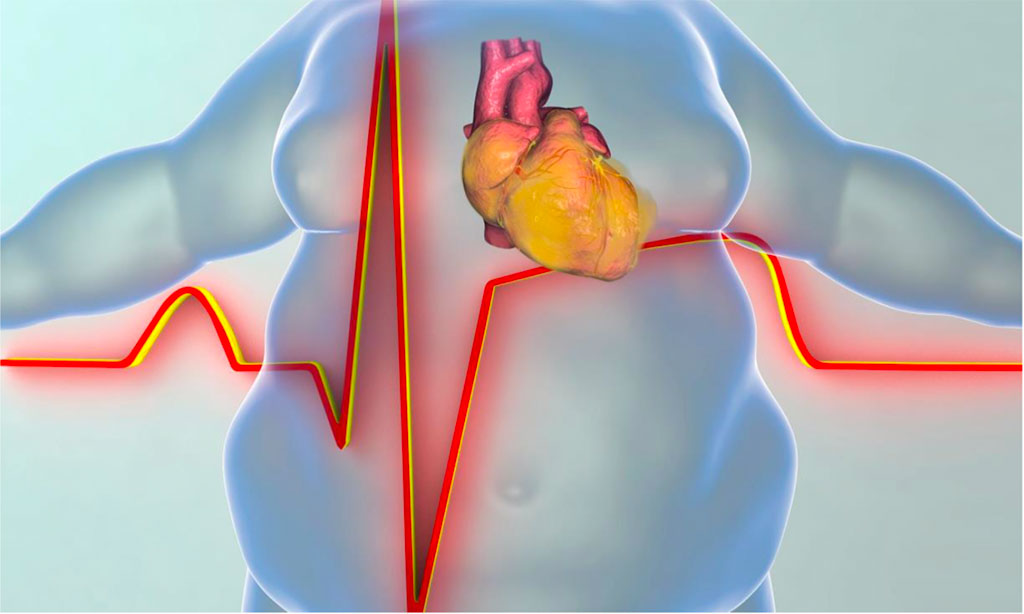
Obesity isn’t just a cosmetic concern. It is a medical problem that increases your risk of other diseases and health problems, such as heart disease, diabetes, high blood pressure and certain cancers.
There are many reasons why some people have difficulty avoiding obesity. Usually, obesity results from a combination of inherited factors, combined with the environment and personal diet and exercise choices.
Overweight and obesity are increasingly common conditions in the United States. They are caused by the increase in the size and the amount of fat cells in the body. It is measured as body mass index (BMI) and waist circumference. Obesity is a serious medical condition that can cause complications such as metabolic syndrome, high blood pressure, atherosclerosis, heart disease, diabetes, high blood cholesterol, cancers and sleep disorders. Treatment depends on the cause and severity of the condition and whether there may be complications.
Facts about overweight and obesity
- In 2016, more than 1.9 billion adults aged 18 years and older were overweight. Of these over 650 million adults were obese.
- In 2016, 39% of adults aged 18 years and over (39% of men and 40% of women) were overweight.
Overall, about 13% of the world’s adult population (11% of men and 15% of women) were obese in 2016. The worldwide prevalence of obesity nearly tripled between 1975 and 2016.
In 2020, an estimated 38.5 million children under the age of 5 years were overweight or obese. Once considered a high-income country problem, overweight and obesity are now on the rise in low- and middle-income countries, particularly in urban settings. In Africa, the number of overweight children under 5 has increased by nearly 24% percent since 2000. Almost half of the children under 5 who were overweight or obese in 2019 lived in Asia.
Over 340 million children and adolescents aged 5-19 were overweight or obese in 2016.
The prevalence of overweight and obesity among children and adolescents aged 5-19 has risen dramatically from just 4% in 1975 to just over 18% in 2016. The rise has occurred similarly among both boys and girls: in 2016 18% of girls and 19% of boys were overweight.
While just under 1% of children and adolescents aged 5-19 were obese in 1975, more 124 million children and adolescents (6% of girls and 8% of boys) were obese in 2016.
Overweight and obesity are linked to more deaths worldwide than underweight. Globally there are more people who are obese than underweight – this occurs in every region except parts of sub-Saharan Africa and Asia.
According to the Centers for Disease Control and Prevention, since the 1970s, the obesity rate among children has more than tripled.
This means almost one in every five children and adolescents in the United States alone are overweight or obese. The mechanism of obesity development is not fully understood and it is believed to be a disorder with multiple causes.
- Environmental Factors
- Lifestyle Preferences and
- Cultural Environment
All of the above play pivotal roles in the rising prevalence of obesity worldwide. In general, overweight and obesity are assumed to be the results of an increase in caloric and fat intake. On the other hand, there are supporting evidence that excessive sugar intake by soft drink, fast food, increased portion size, and steady decline in physical activity have been playing major roles in the rising rates of obesity all around the world.
The Brain’s Comfort Food Center
Scientists continue to research the effect that the chemical composition of foods may have on our moods. While such research is very valuable, we want to focus on the psychology, not the biology, of comfort food. Some individuals eat less when they’re stressed, but most will increase their food intake – and crucially, the intake of calorie-dense food high in sugar and fat.
To understand what controls this ‘stress eating’, weight loss researchers investigated different areas of the brain in mice. While food intake is mainly controlled by a part of the brain called the hypothalamus, another part of the brain – the amygdala processes emotional responses, including anxiety.
This study showed that when stressed over an extended period of time, and when high calorie food was available, mice became obese more quickly than those that consumed the same high fat food in a stress-free environment. – [At the center of this weight gain, scientists discovered, there was a molecule called NPY, which the brain produces naturally in response to stress to stimulate eating in humans as well as mice].
Background
Neuropeptide Y (NPY) is a 36 amino acid peptide that belongs to the pancreatic polypeptide (PP) family, which also includes peptide YY (PYY). The mature 36-residue NPY is produced from a larger pre-pro 97-residue NPY precursor through a series of cleavage reactions at dibasic sites and C-terminal amidation of the peptide product. NPY is widely expressed in the central nervous system and exerts its action through stimulation of 5 different receptors (Y1-Y5) that belong to the G protein-coupled receptor family.
NPY in the hypothalamus exhibits orexigenic activity through activation of Y1 and Y5 receptors (5). NPY is involved in the control of bone homeostasis, through the regulation of osteoblast activity by Y1 and Y2 receptors, and the regulation of testosterone secretion by activating Y1 receptor in testicular vessels. Research studies suggest that modulation of NPY activity and signaling represents a potential strategy for the development of appetite control and anti- obesity agents.
Our Solution:
- Appetite Supp./(Leptin) – (Provides bio-frequencies that encourage dopamine stimulation).
- H2o Infuser Water Bottle & Energy Chip – (25oz. Trinity BPA free Plastic Bottle with Shaker made to infuse your water with any fruit of your choice). Use twice a day for supporting hydration
- Stop Crave – (Supports the mind to reduce cravings for sugar/food and or harmful habits).
- Stress/Anxiety – (Addresses restless symptoms caused by acute stress and anxiety).
- Weight Loss/Leptin – (Increases the metabolic rate to encourage weight loss).

Note:
Studies have shown that the more water with lemon you drink the more calories you burn when you are at rest, called resting energy expenditure. According to these studies, the number of calories an adult burn after drinking a 17-ounce glass of water increases by 20-30% for the following hour.
Lemons also contain a fiber called pectin that’s been shown in studies to impact weight loss. Pectin can work as an anti-inflammatory agent, reducing bloating and puffiness. It also can assist in reducing the absorption of fat in your body and regulating your insulin (blood sugar) levels.
Our technology is made as a complementary method of achieving behavioral responses. We are not in competition with standard medical practice or a medical procedure that uses traditional therapy. We make products that work on a different part on the body that triggers responses through electrical pathways to prevent disorders.





